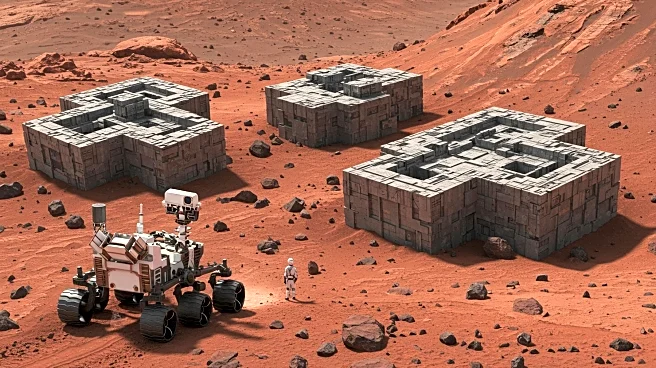What's Happening?
NASA's Curiosity rover is currently exploring the boxwork structures on Mars, focusing on the 'peace sign' ridges. The rover's activities include contact science targets and environmental observations. The rover's instruments, such as MAHLI, APXS, ChemCam, and Mastcam, are being utilized to study the ridges and surrounding areas. The environmental science group is conducting dust-devil and cloud movies to understand Martian weather patterns. These efforts are part of the Mars Science Laboratory mission, which aims to gather detailed information about Mars' geological features and atmospheric conditions.
Why It's Important?
The exploration of Mars' boxwork structures by Curiosity provides valuable insights into the planet's geological history and environmental conditions. Understanding these structures can help scientists infer the processes that shaped Mars' surface and assess its potential for past life. The data collected by Curiosity contributes to the broader goals of Mars exploration, including future human missions. By studying Martian weather patterns and geological formations, NASA can better prepare for long-duration missions and develop technologies for sustainable exploration.
What's Next?
Curiosity will continue its journey through the boxwork structures, conducting untargeted science and environmental observations. The rover's findings will inform future Mars missions, including potential human exploration. NASA plans to use the data to refine its understanding of Mars' climate and geology, aiding in the selection of landing sites for upcoming missions. The ongoing research will also support the development of technologies for long-term survival on Mars.











